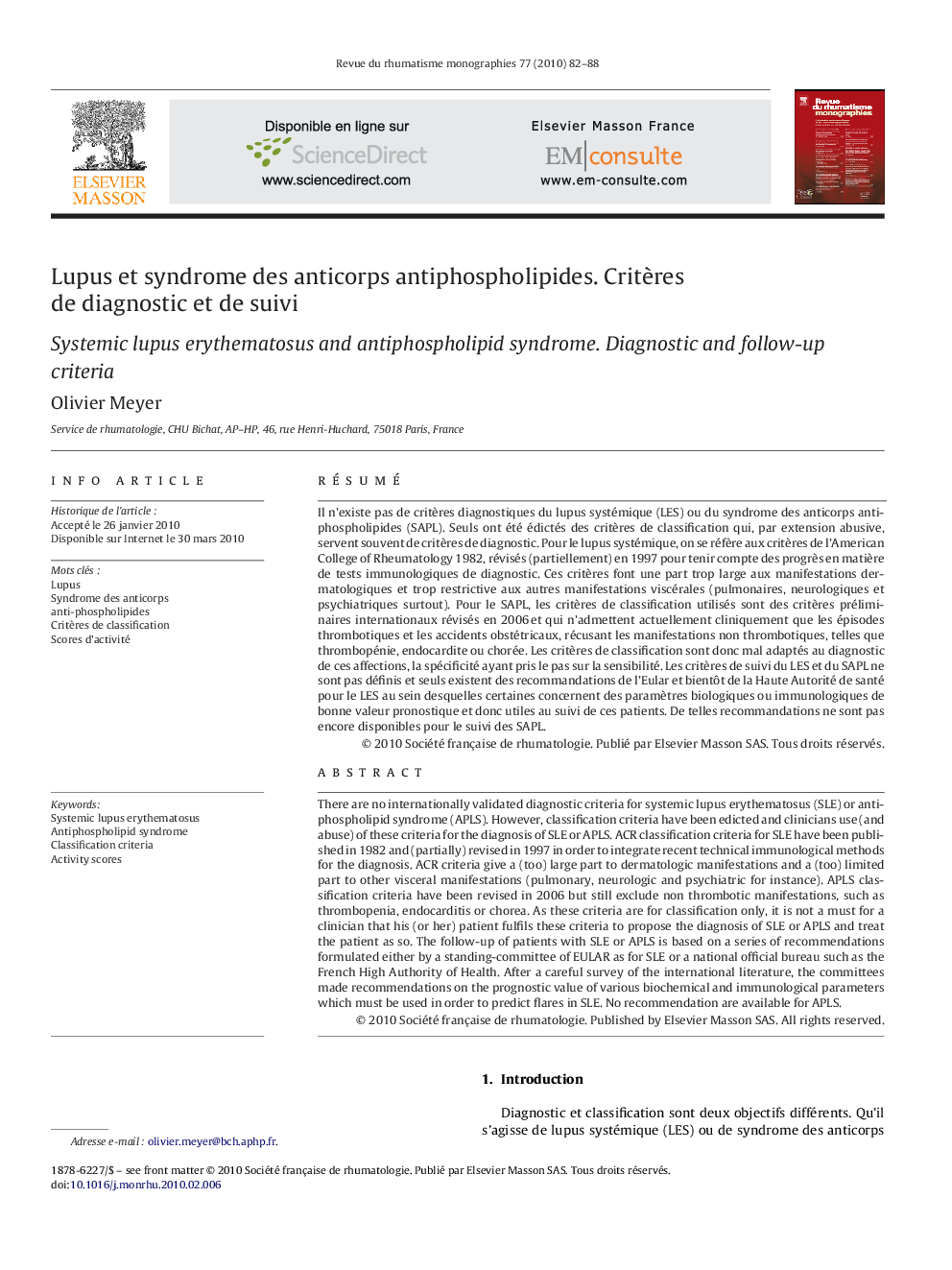| کد مقاله | کد نشریه | سال انتشار | مقاله انگلیسی | نسخه تمام متن |
|---|---|---|---|---|
| 3390072 | 1220897 | 2010 | 7 صفحه PDF | دانلود رایگان |

RésuméIl n’existe pas de critères diagnostiques du lupus systémique (LES) ou du syndrome des anticorps antiphospholipides (SAPL). Seuls ont été édictés des critères de classification qui, par extension abusive, servent souvent de critères de diagnostic. Pour le lupus systémique, on se réfère aux critères de l’American College of Rheumatology 1982, révisés (partiellement) en 1997 pour tenir compte des progrès en matière de tests immunologiques de diagnostic. Ces critères font une part trop large aux manifestations dermatologiques et trop restrictive aux autres manifestations viscérales (pulmonaires, neurologiques et psychiatriques surtout). Pour le SAPL, les critères de classification utilisés sont des critères préliminaires internationaux révisés en 2006 et qui n’admettent actuellement cliniquement que les épisodes thrombotiques et les accidents obstétricaux, récusant les manifestations non thrombotiques, telles que thrombopénie, endocardite ou chorée. Les critères de classification sont donc mal adaptés au diagnostic de ces affections, la spécificité ayant pris le pas sur la sensibilité. Les critères de suivi du LES et du SAPL ne sont pas définis et seuls existent des recommandations de l’Eular et bientôt de la Haute Autorité de santé pour le LES au sein desquelles certaines concernent des paramètres biologiques ou immunologiques de bonne valeur pronostique et donc utiles au suivi de ces patients. De telles recommandations ne sont pas encore disponibles pour le suivi des SAPL.
There are no internationally validated diagnostic criteria for systemic lupus erythematosus (SLE) or antiphospholipid syndrome (APLS). However, classification criteria have been edicted and clinicians use (and abuse) of these criteria for the diagnosis of SLE or APLS. ACR classification criteria for SLE have been published in 1982 and (partially) revised in 1997 in order to integrate recent technical immunological methods for the diagnosis. ACR criteria give a (too) large part to dermatologic manifestations and a (too) limited part to other visceral manifestations (pulmonary, neurologic and psychiatric for instance). APLS classification criteria have been revised in 2006 but still exclude non thrombotic manifestations, such as thrombopenia, endocarditis or chorea. As these criteria are for classification only, it is not a must for a clinician that his (or her) patient fulfils these criteria to propose the diagnosis of SLE or APLS and treat the patient as so. The follow-up of patients with SLE or APLS is based on a series of recommendations formulated either by a standing-committee of EULAR as for SLE or a national official bureau such as the French High Authority of Health. After a careful survey of the international literature, the committees made recommendations on the prognostic value of various biochemical and immunological parameters which must be used in order to predict flares in SLE. No recommendation are available for APLS.
Journal: Revue du Rhumatisme Monographies - Volume 77, Issue 2, April 2010, Pages 82–88